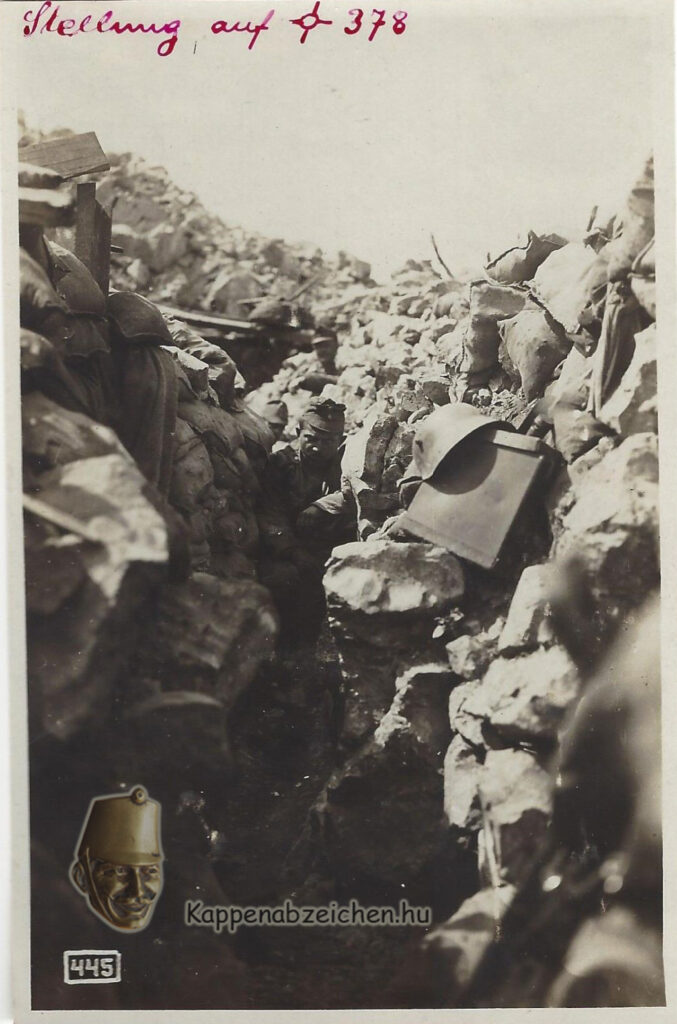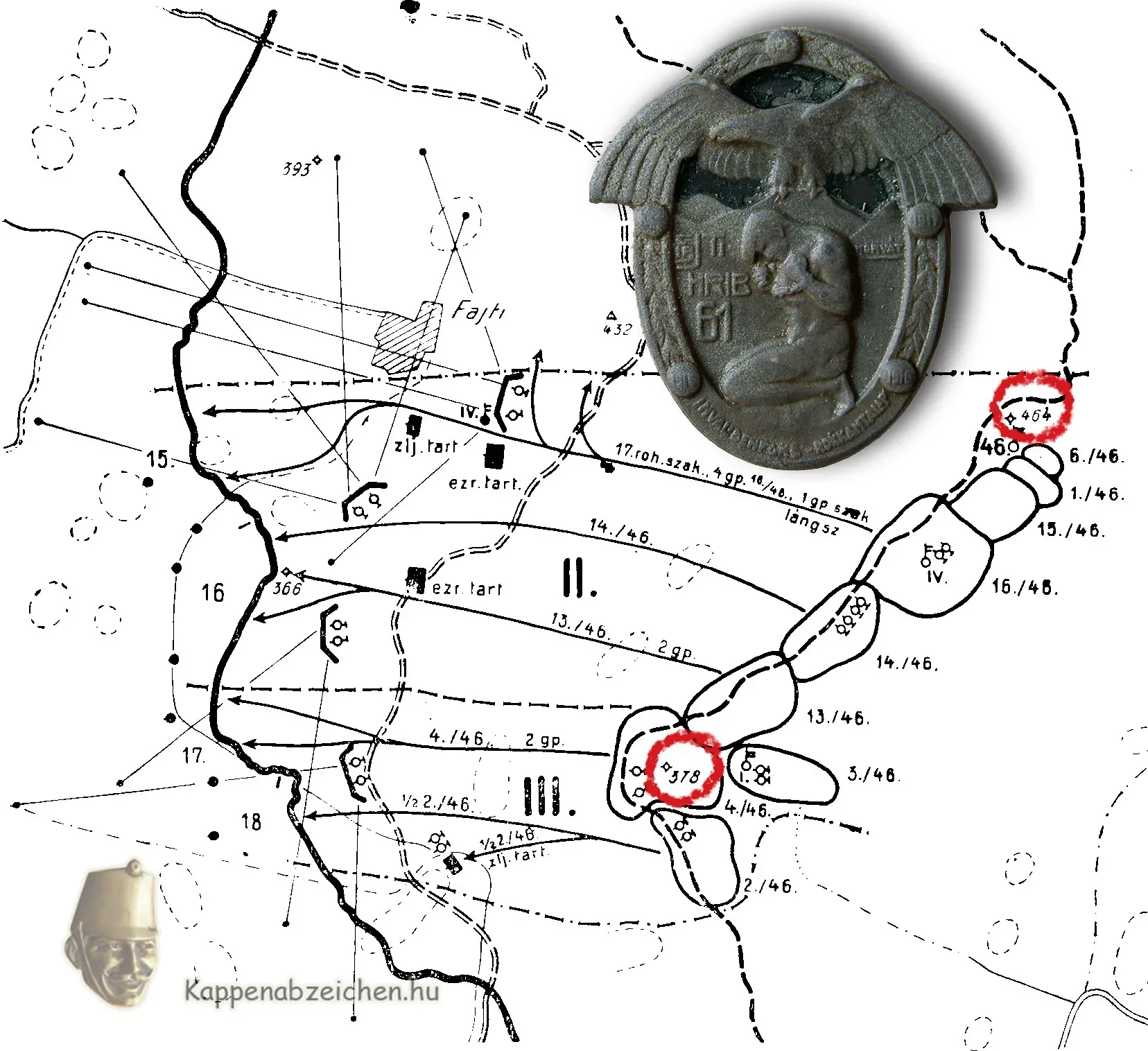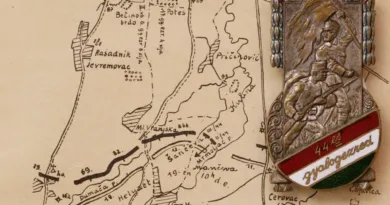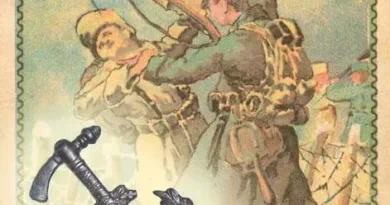August 1917 Fajti Hrib
If we have to mark two places on the Italian front where the biggest battles took place, and which are mentioned most often in Hungarian reminiscences and historiography, then the first would be Mt San Michele, and the second would be Fajti Hrib. The two are located approx. 10 miles distance in the northern part of the Karst plateau. Both are outstanding points of the terrain section above the Wippach river. Both were protected by troops of the VII corps between 1915 and 1917. The permanent troop unit of the corps was the 17th infantry division, other troops changed from time to time (e.g. the 20th honvéd division was replaced by the 41st at the beginning of 1917). The four regiments of the 17th Division were the 39th, 43rd, 46th and 61st Infantry Regiments.
The 11th Battle of Isonzó took place in August 1917. It was a classic material battle, with an incredibly large artillery preparation and repeated mass attacks. The target of the attack was again Trieste, that is, the main attack direction targeted the Karst plateau. The Italian attackers directed almost three-quarters of their soldiers here, 600 battalions, supported by 5,200 artillery pieces. Half of the force organized into two armies attacked the Bainsizza plateau at the upper reaches of the Isonzó, the other half attacked the Karst. Since the number of troops deployed against Carinthia and Tyrol was reduced, the Monarchy was also able to increase the density of its troops on the endangered front sections. Even so, the superiority of the Italians was at least twice as large, and their superiority in artillery was three times greater.
The Italians marching against Karszt were received in the northern sector of the plateau by two regiments of the 17th division, the 39th from Debrecen and the 46th from Szeged. Despite the huge losses, the defense of Fajti Hrib did not waver. Further north, however, the Italians broke through the line of the 21st Division and occupied most of the Bainsizza plateau. The spread of the successful attack on Bainsizza plateau along the Isonzo to the south could only be stopped by the defenders of Mt San Gabriele. They were the regiments of the 20th honvéd division, which had previously separated from the VII. corps.

Of the two heights of the Fajti Hrib, the Italians were on the west, and the Monarchy’s positions were on the east. The enemy could see the position system stretching from the two heights across the terrain between them. Thus, any kind of movement during the day was impossible there. In the rocky terrain, only stone and sandbag walls provided some cover. The infantry retreating to the caverns escaped the intense artillery fire relatively unscathed on August 17 and 18. On the 19th, the first Italian mass attack was launched, which was already intercepted at the obstacle system in front of the lines. The two critical points of the positions were heights 464 and 378. On the 21st, the Italians managed to break into the trenches of IR 39 at several points, in the section of 378 elevation point, but the reserves recaptured the trenches with counterattacks. By this time, the troops of the 17th Division were mixed up with the deployment of the reserves. The regiments helped each other in crisis situations. Height 378 remained the main target of attacks even later. The exhausted 39th regiment was replaced by the 43rd regiment on the 23rd. At that time, the 46th and 61st squadrons sent there as reinforcements and also heavily decimated returned to their battalions. After August 24, the Italian troops moved the gravity point of the attack to the Bainsizza plateau, where they tried to widen the breakthrough in the southern direction. Relative calm has set in on Fajti Hrib.

Among the regiments defending the Fajti Hrib, the 46th and 61st also had cap badges made separately for this front section. Both Kappenabzeichen were already featured here. The attached photo shows a detail of the position lying at elevation point 378. The map shows the attack directions of the later 12th Battle of Isonzo in October 1917. The starting position was the line successfully defended in August. The position of elevation points 464 and 378, where the battles mainly raged, is clearly visible.




